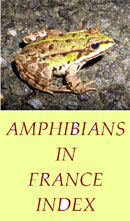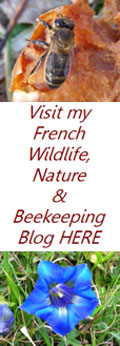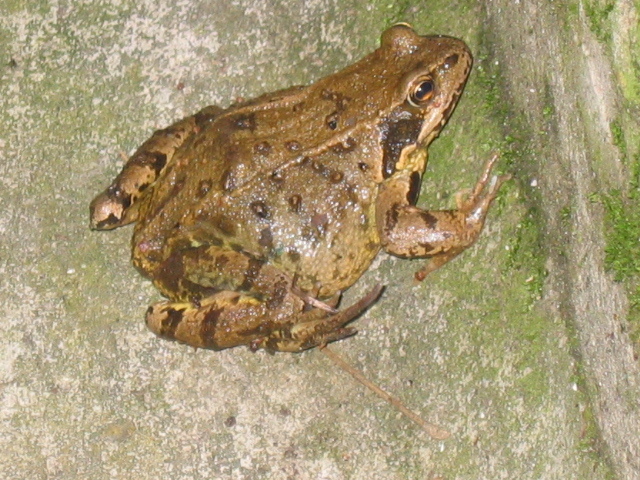
Grenouille Rousse
Rana temporania
Common Frog
The Common frog is variable in colour, typically yellowish brown, brown or olive green, occasionally with a reddish appearance with a maximum length of 9cm, spotted back with bold barring on the rear legs. Underneath the males are cream or pale yellow speckled with brown or grey, females more strongly coloured from pale yellow to orange. Back feet are partly webbed and there is a bold dark patch clearly visible behind the eyes which have a horizontal oval pupil. The male has two internal vocal sacs.
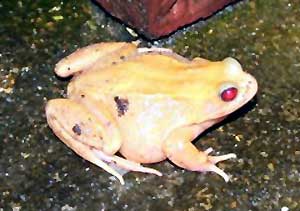
The common frog has a vast range in Europe and North western Asia being found as far north as the Artic circle. It is present in most of France except in the South west where it is either absent or scarce. It is found in all types of habitats outside of the breeding season often far from water, although juveniles may spend summer in or around water. Diet consists of small insects, grubs, earthworms, slugs etc. Generally nocturnal, especially when hot and dry, although can be active day and night in mild or wet weather. Hibernation begins in October and can finish in January; this is extremely variable depending on the region and climate conditions.

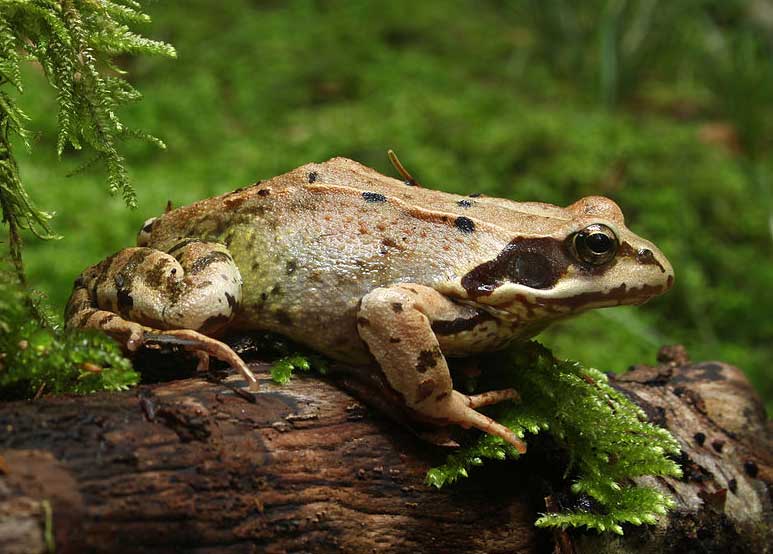
Reproduction starts immediately after hibernation ends and is very early, in fact hibernation may not occur at all in mild winters in some regions and spawning can commence as early as late December. Mating often brings together large numbers of frogs and spawn is laid in large clumps of 300 to 1000 eggs in shallow water, ponds, lakes, ditches and puddles.
As a result of this very early breeding many eggs are lost to freezing weather following a mild spell.
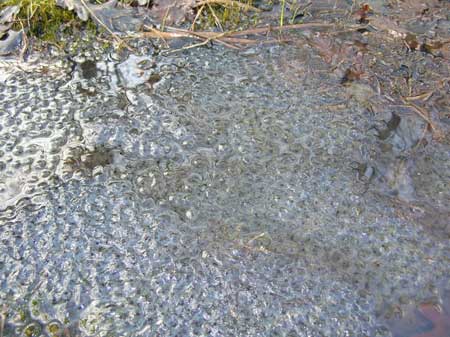
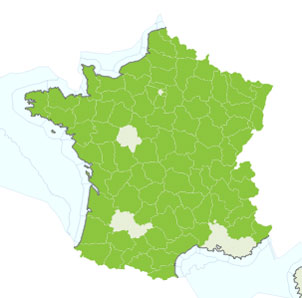
The Map isn't a true representation as for example being shown as present in the Vienne when they are only to be found in one small locality. Although still relatively common the species is in overall decline due principally to loss of habitat. Fully protected species.
Berne convention Annexe 3, Habitats directive Annexe 5, Protection Nationale Art. 3&4.

